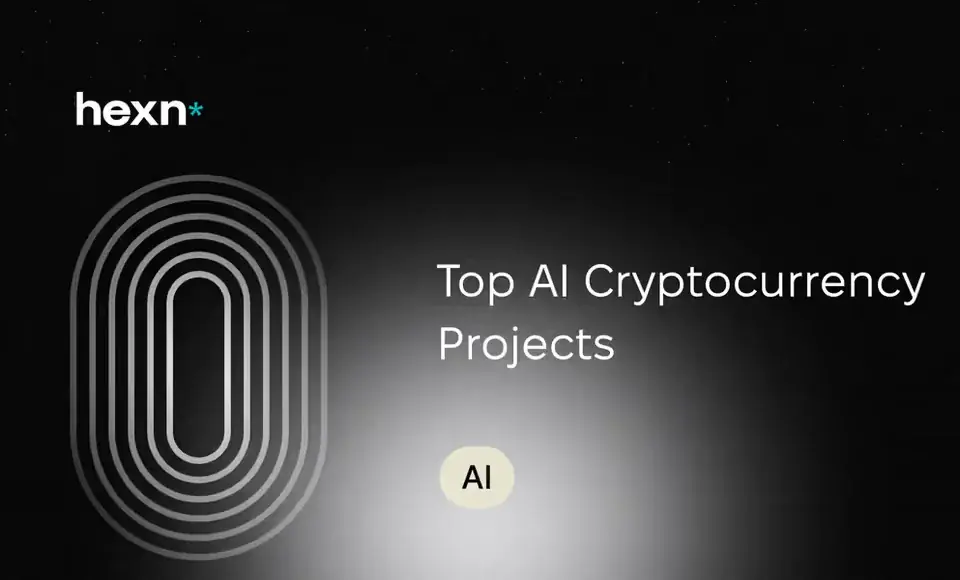Key Takeaways
- NEAR, Internet Computer, ASI Alliance, Render, and Bittensor are among the most prominent projects combining blockchain with AI to expand access and capability.
- These platforms apply AI in different ways — from improving network performance and automating smart contracts to decentralizing AI training and sharing GPU power.
- The blend of AI and distributed ledger technology is opening new options for developers and end users, enabling more efficient, transparent, and decentralized applications.
What This List Covers
AI and blockchain are increasingly linked: AI provides smarter automation and insights, while blockchain adds transparency, incentives, and decentralization. Below we profile five leading AI-focused crypto projects by market cap (August 2024) and explain how each integrates artificial intelligence into its platform.
NEAR Protocol (NEAR): Scalable Layer-1 with AI Tooling
Market cap: $4.68 billion (as of August 2024).
What NEAR Protocol Does
NEAR is a layer-1 blockchain built to handle high transaction volumes without the congestion seen on some older networks. It uses sharding to split work across validators so the chain can process many transactions in parallel, making it a practical base for decentralized apps.
How NEAR Applies AI
NEAR uses AI to fine-tune network behavior and support developers. Machine learning models can help predict traffic patterns, allocate resources, and reduce latency. The ecosystem is also experimenting with AI-assisted developer tools that speed up smart contract creation and testing, lowering the barrier for building complex dApps.
Internet Computer (ICP): Running Full-Stack Apps On-Chain
Market cap: $3.64 billion (as of August 2024).
What Internet Computer Aims to Do
The Internet Computer seeks to host entire web services directly on a decentralized network rather than relying on cloud providers. That enables developers to build social platforms, enterprise systems, games, and more with the benefits of distributed hosting.
How ICP Integrates AI
By letting AI logic run inside smart contracts and on-chain services, Internet Computer enables DApps to make automated decisions and perform heavy computations without external servers. Use cases include automated trading strategies, risk management tools, and other services that benefit from real-time, autonomous decision-making.
Artificial Superintelligence Alliance (FET): Cooperative AI Networks and Agents
Market cap: $2.80 billion (as of August 2024).
What the ASI Alliance Is
The ASI Alliance brings together multiple projects to accelerate decentralized research and development toward more capable general AI systems. By combining autonomous software agents, open-source AI initiatives, and secure data-sharing frameworks, the alliance aims to nurture cooperative AI ecosystems.
How the Alliance Uses AI
Autonomous agents powered by machine learning handle tasks like negotiating services, optimizing logistics, and managing resources. These agents can interact with each other on-chain, creating a marketplace for AI-driven services and data while emphasizing open tools and fair access.
Render (RNDR): Decentralized GPU Marketplace for Creators and AI
Market cap: $2.04 billion (as of August 2024).
What Render Provides
Render connects creators who need GPU compute for rendering and machine learning with individuals and organizations that have idle GPU capacity. The platform makes high-performance graphics and compute resources more affordable and accessible by spreading work across many providers.
How Render Leverages AI
AI enhances both matching and rendering workflows on Render. Machine learning helps assign tasks to the best available GPUs and optimizes completion times and costs. AI techniques are also used during rendering itself for tasks like upscaling, texture synthesis, and accelerating real-time effects.
Bittensor (TAO): A decentralized, incentive-driven AI network
Market cap: $2.03 billion (as of August 2024).
What Bittensor Is Building
Bittensor aims to create a global, open neural network where participants contribute computation and data to train shared models. Instead of centralized control, contributors are rewarded with tokens based on the usefulness of their inputs.
How Bittensor Integrates AI
The protocol ties incentive mechanics directly to model training. Contributors (sometimes called miners) run AI workloads and provide data, and the network uses evaluation algorithms to assess contribution quality and distribute rewards. This model encourages diverse inputs and continuous improvement of shared AI capabilities.
How AI Plus Blockchain Could Change Apps and Services
Pairing AI with distributed ledgers can reduce reliance on centralized providers, create new economic incentives for data and compute sharing, and make AI services more transparent. For developers, this means fresh options for building adaptive, secure, and community-driven applications; for users, it can mean fairer access and clearer data governance.
Final Thoughts
Each project on this list approaches AI differently: some focus on infrastructure, others on marketplaces for compute or decentralized model training. Whether you are a developer exploring new stacks or an observer tracking innovation, these platforms illustrate how AI and blockchain can complement each other to deliver new kinds of decentralized services.
